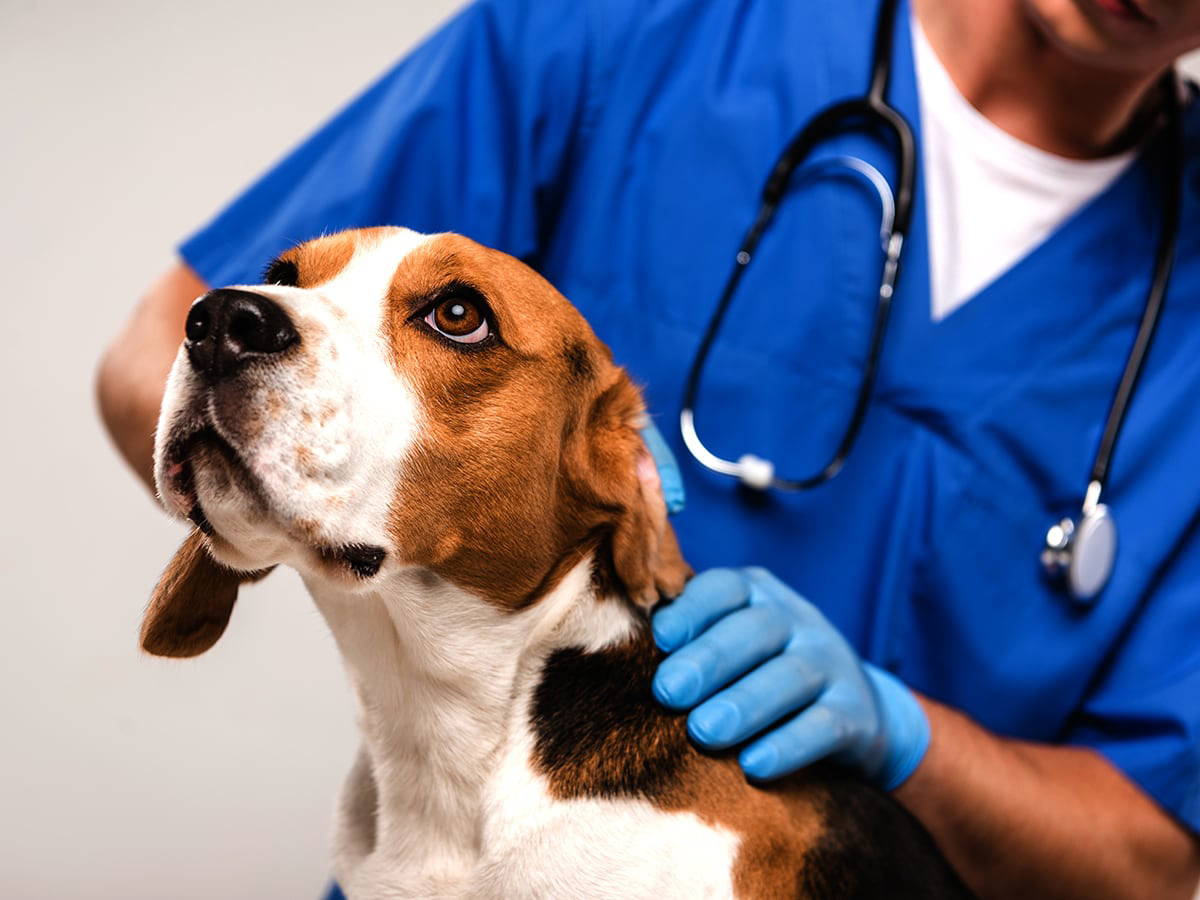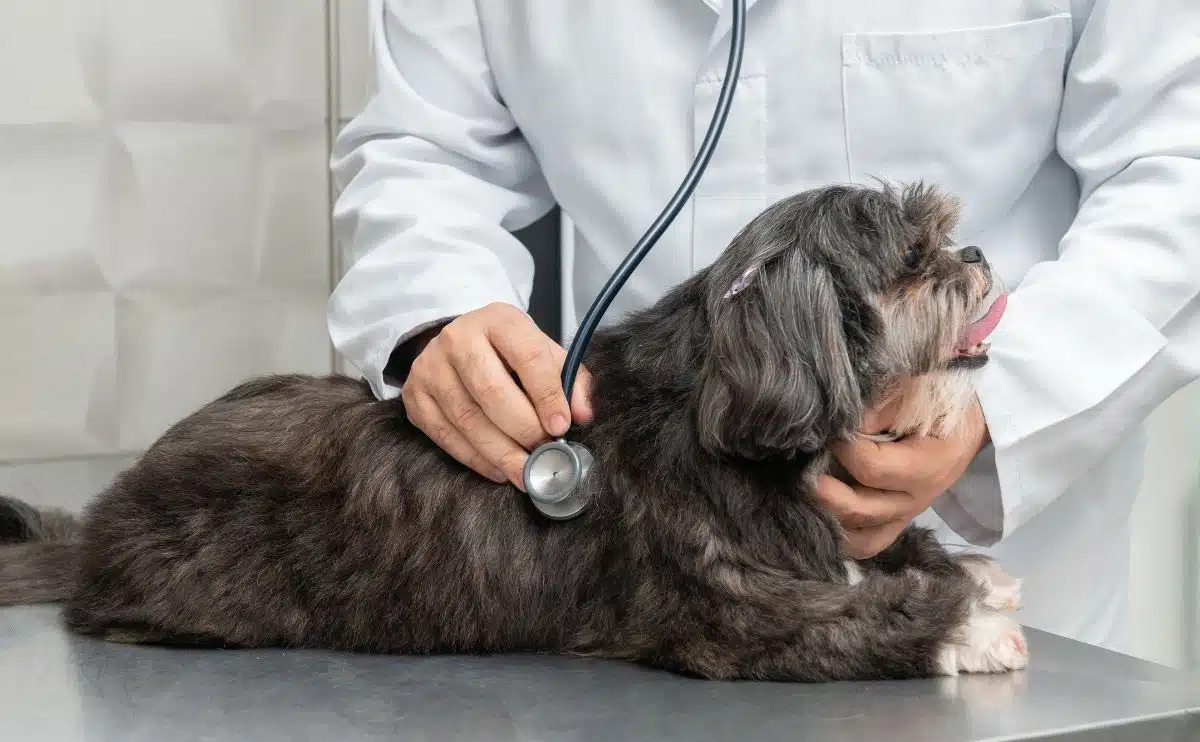

Finance
What Pet Insurance Covers Wellness Visits
Modified: December 30, 2023
Looking to cover wellness visits for your pet? Discover how pet insurance with a focus on finance can help you manage unexpected veterinary expenses.
(Many of the links in this article redirect to a specific reviewed product. Your purchase of these products through affiliate links helps to generate commission for LiveWell, at no extra cost. Learn more)
Table of Contents
- Introduction
- What is Pet Insurance and Why it’s Important
- Understanding Wellness Visits
- Coverage for Routine Examinations
- Preventive Care Services Covered
- Vaccinations and Their Coverage
- Dental Cleanings and Oral Care
- Parasite Control and Prevention
- Spaying and Neutering Procedures
- Prescription Medications and Supplements
- Alternative Therapies and Wellness Treatments
- Exclusions and Limitations
- Choosing the Right Pet Insurance Plan
- Conclusion
Introduction
Pet ownership brings immeasurable joy and companionship to our lives. As responsible pet owners, we want to ensure that our furry friends receive the best possible care, especially when it comes to their health. Just like humans, pets require regular medical check-ups and preventive healthcare services to stay healthy. However, veterinary care can be expensive, and unexpected medical expenses can quickly add up.
This is where pet insurance comes in. Pet insurance is a type of insurance that helps cover the cost of veterinary care for your beloved pets. It provides financial protection and peace of mind, allowing you to give your pets the care they deserve without worrying about the financial burden.
While most people are familiar with the concept of pet insurance, they may not be aware of the specific coverage it offers. In this article, we will focus on one aspect of pet insurance – wellness visits. We will delve into what wellness visits are and how pet insurance can help cover the costs associated with maintaining your pet’s overall well-being.
Understanding what pet insurance covers in terms of wellness visits is crucial for pet owners who want to ensure comprehensive care for their furry companions. By having a clear understanding of the benefits and limitations of pet insurance coverage, you can make informed decisions and provide the best possible care for your pet.
What is Pet Insurance and Why it’s Important
Pet insurance is a financial product designed to help cover the cost of veterinary care for pets. It operates similarly to health insurance for humans, providing coverage for various medical expenses, including illness, injury, and preventive care services.
Having pet insurance is important because it allows you to provide the best possible care for your furry companion, without the worry of exorbitant medical bills. Here are a few key reasons why pet insurance is important:
- Financial Protection: Pet insurance provides a safety net in case your pet requires unexpected medical treatment or emergency care. With the rising costs of veterinary services, having pet insurance helps alleviate the financial burden of expensive procedures, diagnostics, surgeries, and medications.
- Peace of Mind: Knowing that you have pet insurance means you can make medical decisions for your pet based on what is best for their health, rather than solely focusing on the cost. You can pursue necessary treatments, including specialized care, without worrying about the financial implications.
- Access to Quality Care: Pet insurance gives you the freedom to choose the best veterinarians and medical facilities for your pet. You can seek out specialists, undergo advanced diagnostics, and provide your pet with the most up-to-date treatments and technologies.
- Preventive Care: Pet insurance often includes coverage for preventive care services, such as vaccinations, routine check-ups, dental cleanings, and parasite control. By having coverage for these services, you can take a proactive approach to your pet’s health by catching potential issues early and preventing more serious health problems down the line.
- Emergency Coverage: Accidents and emergencies can happen at any time. With pet insurance, you can have peace of mind knowing that emergency medical treatments and hospitalization will be covered, saving you from having to make difficult decisions based on financial constraints.
By investing in pet insurance, you are investing in your pet’s overall health and well-being. It allows you to give them the best possible care, ensuring they live a happy, healthy, and fulfilling life by your side.
Understanding Wellness Visits
Wellness visits, also known as preventive care visits, are routine check-ups that focus on maintaining your pet’s overall health and well-being. These visits are an essential part of responsible pet ownership and play a significant role in preventing illnesses, detecting early signs of health issues, and keeping your pet in optimal condition.
During a wellness visit, a veterinarian will conduct a thorough examination of your pet, which may include:
- Checking their weight and body condition
- Listening to their heart and lungs
- Examining their eyes, ears, and mouth
- Assessing their mobility and joint health
- Palpating their abdomen and lymph nodes
- Inspecting their skin and coat for any abnormalities
In addition to the physical examination, your veterinarian may recommend certain preventive care services and discuss any health concerns or behavioral issues you may have noticed with your pet.
Regular wellness visits allow veterinarians to establish a baseline for your pet’s health and monitor any changes over time. By detecting and addressing health issues early on, you can potentially avoid more serious and costly problems down the line.
It’s important to note that wellness visits are different from sick or injury-related visits. While sick visits focus on diagnosing and treating specific health problems, wellness visits aim to prevent health issues from arising in the first place.
Now that we understand the importance of wellness visits, let’s explore how pet insurance can help cover the costs associated with these routine examinations and preventive care services.
Coverage for Routine Examinations
When it comes to pet insurance, coverage for routine examinations is a key component for maintaining your pet’s overall health. Routine examinations, also known as wellness exams, are an essential part of preventive care and are typically recommended annually for younger pets and more frequently for senior pets.
Pet insurance plans vary in their coverage for routine examinations, so it’s important to review the policy details to understand what is included. Generally, pet insurance plans may cover a portion or the full cost of routine examinations, depending on the specific plan and coverage limits.
During a routine examination, a veterinarian will conduct a thorough physical examination of your pet, looking for any signs of health problems or abnormalities. They will assess your pet’s weight, check their vital signs, examine their eyes, ears, teeth, and skin, and address any concerns you may have.
Having pet insurance that covers routine examinations allows you to take a proactive approach to your pet’s health by catching potential issues early on. Early detection can lead to early treatment, often resulting in better outcomes and potentially reducing overall healthcare costs in the long run.
It’s important to note that pet insurance typically does not cover additional diagnostic tests, treatments, or medications that may be recommended as a result of the routine examination. However, these costs may be covered under other aspects of the insurance policy, such as illness or injury coverage.
Ultimately, having coverage for routine examinations through pet insurance can provide peace of mind and encourage regular visits to the veterinarian to keep your pet healthy and happy.
Preventive Care Services Covered
Preventive care plays a crucial role in keeping your pet healthy and preventing the onset of diseases or health issues. Many pet insurance plans include coverage for a range of preventive care services to ensure that your pet receives the necessary vaccinations, screenings, and treatments. Here are some common preventive care services that may be covered by pet insurance:
- Vaccinations: Vaccinations are vital to protect your pet against contagious diseases such as rabies, distemper, parvovirus, and more. Pet insurance plans often cover the cost of necessary vaccinations, ensuring that your pet stays up to date with their immunizations.
- Regular Check-ups: Alongside routine examinations, pet insurance may cover the cost of regular wellness visits, which include preventive care discussions and screenings. These visits allow veterinarians to monitor your pet’s overall health and detect any potential issues early on.
- Dental Cleanings: Good oral health is essential for your pet’s overall well-being. Pet insurance plans may cover dental cleanings, which involve removing tartar and plaque buildup, as well as providing necessary treatments for dental conditions or diseases.
- Parasite Control: Fleas, ticks, heartworms, and other parasites can negatively impact your pet’s health. Pet insurance may provide coverage for preventive medications, such as flea and tick preventives, heartworm preventives, and deworming treatments.
- Spaying and Neutering: If you have a puppy or kitten, pet insurance may cover the cost of spaying or neutering procedures. These surgeries not only prevent unwanted pregnancies but can also have long-term health benefits for your pet.
- Microchipping: In case your pet goes missing, having a microchip can significantly increase their chances of being reunited with you. Some pet insurance plans cover the cost of microchipping, providing an added layer of security for your furry friend.
It’s important to review the specific policy details to understand the extent of coverage for preventive care services. Some plans may have limitations on the number of covered services or specific requirements for eligibility.
By having pet insurance that covers preventive care services, you can take proactive measures to keep your pet healthy and prevent potential health issues from arising. Regular vaccinations, screenings, and treatments can help ensure a long and happy life for your beloved companion.
Vaccinations and Their Coverage
Vaccinations are an essential aspect of preventive care for pets. They help protect our furry friends from preventable diseases that can have serious consequences for their health. Pet insurance plans often provide coverage for necessary vaccinations, ensuring that your pet receives the immunizations they need to stay healthy.
Common vaccinations for pets include those that protect against diseases such as rabies, distemper, parvovirus, adenovirus, leptospirosis, and more. These vaccinations are typically given in a series of shots during the early stages of a pet’s life and are followed by booster doses to maintain immunity.
The coverage for vaccinations can vary depending on the pet insurance provider and the specific policy. Some pet insurance plans may cover the full cost of vaccinations, while others may offer coverage up to a certain limit. It’s important to review the policy details to understand the extent of coverage for vaccinations.
When considering pet insurance, it is crucial to ensure that the plan covers the essential core vaccinations recommended by veterinarians. These include vaccines such as rabies, which is required by law in most areas, and vaccines for diseases that have a high risk of transmission or severe health consequences.
While vaccinations are an important part of preventive care, it’s worth noting that pet insurance typically does not cover the cost of non-essential vaccinations, such as those for lifestyle-based diseases or those required for travel purposes.
Additionally, pet insurance may not cover the costs associated with administering the vaccine, such as the veterinary visit fee. However, having coverage for the actual vaccine itself can significantly reduce the financial burden of keeping your pet up to date with their immunizations.
Regular vaccinations are crucial to protect your pet’s health and prevent the spread of contagious diseases. With the coverage provided by pet insurance, you can ensure that your furry friend receives the necessary vaccinations to maintain their overall well-being.
Dental Cleanings and Oral Care
Proper dental care is essential for your pet’s overall health and well-being. Dental cleanings and oral care play a crucial role in maintaining your pet’s oral hygiene, preventing dental diseases, and promoting good overall health. Fortunately, many pet insurance plans provide coverage for dental cleanings and related dental procedures.
Dental cleanings for pets are performed under general anesthesia by a veterinarian. During the procedure, tartar and plaque buildup are removed from the teeth, both above and below the gumline. The teeth are then thoroughly cleaned, polished, and inspected for any signs of dental disease, such as gum inflammation, tooth decay, or periodontal disease.
Pet insurance coverage for dental cleanings can vary, so it’s important to review the policy details to understand the extent of coverage. Some plans may cover the full cost of dental cleanings, while others may have limitations or require specific dental-related add-ons to the policy.
In addition to dental cleanings, pet insurance may also cover other dental procedures that may be necessary for your pet’s oral health. These may include dental extractions, treatment for oral infections, or even oral surgeries if needed.
By having coverage for dental cleanings and oral care, you can prioritize your pet’s dental health without worrying about the financial burden. Regular dental cleanings not only help maintain clean teeth and fresh breath but also help prevent more serious oral health problems.
Poor oral hygiene can lead to issues such as gum disease, tooth decay, infection, and potential tooth loss. Moreover, dental problems can affect your pet’s overall health, leading to systemic infections and complications in vital organs like the heart and kidneys.
Remember, it’s not just about the aesthetics of your pet’s smile but also the quality of their life. With pet insurance coverage for dental cleanings and oral care, you can ensure that your furry friend receives the necessary preventive and corrective treatments to maintain their oral health and overall well-being.
Parasite Control and Prevention
Parasites, such as fleas, ticks, heartworms, and intestinal worms, pose a significant threat to the health and well-being of our pets. Fortunately, many pet insurance plans offer coverage for preventive medications and treatments to control and prevent parasites.
Parasite control is essential to protect your pet from the harmful effects of these pests. Fleas can cause intense itching, skin irritation, and can even transmit diseases. Ticks can transmit serious illnesses, including Lyme disease, ehrlichiosis, and babesiosis. Heartworms can lead to severe heart and lung disease, while intestinal worms can cause gastrointestinal problems and malnutrition.
Pet insurance coverage for parasite control typically includes preventive medications such as flea and tick preventives, heartworm preventives, and deworming treatments.
Flea and tick preventives are applied monthly and help kill and repel fleas, ticks, and other external parasites. These medications come in various forms, including topical spot-on treatments, oral tablets, or collars. Adequate coverage for these preventives ensures that your pet stays protected from parasites throughout the year.
Heartworm preventives are administered as a monthly chewable tablet or topical treatment and protect your pet against heartworm infections. These preventives are crucial, as heartworm disease is a serious and potentially fatal condition. Coverage for heartworm preventives allows you to provide year-round protection for your pet, especially in areas where heartworm disease is prevalent.
Deworming treatments target internal parasites, such as roundworms, hookworms, and tapeworms. These parasites can affect your pet’s digestion and overall health. Regular deworming treatments, often prescribed by veterinarians, help eliminate and control these parasites. Having coverage for these treatments ensures that you can consistently safeguard your pet against internal parasites.
By having pet insurance that covers parasite control and prevention, you can take proactive measures to protect your pet from the harmful effects of parasites. Regular use of preventive medications and treatments helps keep your pet healthy, comfortable, and free from the potentially severe health consequences of parasite infestations.
Spaying and Neutering Procedures
Spaying and neutering are common surgical procedures recommended for pets to prevent unwanted pregnancies and provide various health benefits. Many pet insurance plans include coverage for spaying and neutering procedures, helping pet owners ensure responsible pet population control and promote their pet’s overall well-being.
Spaying refers to the surgical removal of the ovaries and uterus in female pets, while neutering involves the removal of the testicles in male pets. These procedures are typically performed under general anesthesia by a veterinarian.
Benefits of spaying female pets include the prevention of uterine infections (e.g., pyometra) and the significant reduction in the risk of developing mammary tumors and certain reproductive cancers. Neutering male pets can help decrease the risk of testicular and prostate diseases, reduce aggressive behavior, and curb undesirable traits, such as roaming or territorial marking.
Pet insurance may cover a significant portion or the full cost of spaying and neutering procedures, depending on the specific policy. Having coverage for these procedures can alleviate the financial burden for pet owners and incentivize responsible pet ownership.
It’s important to note that timing for spaying and neutering can vary depending on the species, breed, and individual pet. In general, pets are typically spayed or neutered around six months of age, but your veterinarian can provide guidance based on your pet’s specific needs.
By having pet insurance coverage for spaying and neutering procedures, you can ensure that your pet undergoes these important surgical procedures without worrying about the expenses. Not only do these procedures prevent unwanted litters, but they also provide numerous health benefits that can improve and extend your pet’s quality of life.
When considering pet insurance, make sure to review the policy details to understand the extent of coverage for spaying and neutering procedures. Talk to your veterinarian to determine the most appropriate time for the procedure, taking into account the health and well-being of your pet.
Prescription Medications and Supplements
Just like humans, pets may require prescription medications or supplements to manage and treat various health conditions. From antibiotics and pain relievers to chronic disease management medications, pet insurance plans often include coverage for prescription medications.
Prescription medications for pets are typically prescribed by veterinarians to treat specific health conditions. These medications can be essential for managing acute illnesses, chronic diseases, infections, and post-operative care.
Pet insurance coverage for prescription medications can vary, so it’s important to review the policy details to understand the extent of coverage. Some plans may cover the full cost of prescriptions, while others may have limitations on reimbursement amounts or require co-pays.
In addition to prescription medications, some pet insurance plans may also provide coverage for certain supplements and nutraceuticals. These include vitamins, joint supplements, probiotics, and other dietary supplements that can support your pet’s overall health and well-being.
Supplements can be beneficial for specific conditions, such as joint health, digestion, skin and coat, and immune system support. They can be particularly helpful for senior pets or pets with specific health needs.
Having pet insurance coverage for prescription medications and supplements helps ensure that you can provide the necessary medications and supplements for your pet’s health. It helps alleviate the financial burden of ongoing medication management and allows you to prioritize your pet’s well-being.
It’s important to consult with your veterinarian before using any prescription medications or supplements for your pet. They can provide guidance on the appropriate medications or supplements, dosages, and potential interactions with other medications your pet may be taking.
With the support of pet insurance coverage for prescription medications and supplements, you can confidently address your pet’s medical needs and provide them with the necessary treatments to lead a healthy and comfortable life.
Alternative Therapies and Wellness Treatments
In addition to conventional veterinary care, there is a growing interest in alternative therapies and wellness treatments for pets. These alternative approaches aim to complement traditional treatments and promote overall well-being. Some pet insurance plans recognize the value of these therapies and may offer coverage for alternative treatments.
Alternative therapies for pets encompass a range of treatments, including acupuncture, chiropractic care, physical therapy, massage, herbal medicine, and homeopathy. These therapies focus on holistic healing, addressing the physical, mental, and emotional aspects of your pet’s health.
Acupuncture, for example, involves inserting thin needles into specific points on the body to stimulate energy flow and promote pain relief and healing. Chiropractic care aims to restore proper alignment and mobility of the musculoskeletal system. Physical therapy and massage help rehabilitate injured pets or manage chronic conditions through targeted exercises and hands-on techniques.
Herbal medicine and homeopathy use natural remedies to support the body’s self-healing mechanisms and promote balance. These approaches can be used alongside conventional treatments to enhance overall well-being or address specific health concerns.
While alternative therapies can provide additional options for supporting your pet’s health, it’s important to note that not all pet insurance plans cover these treatments. Some plans may have specific limitations, such as a maximum limit on coverage or restrictions on the types of therapies eligible for reimbursement.
If alternative therapies and wellness treatments are important to you, it is crucial to review the policy details to understand the coverage available. Some pet insurance plans may even offer specific wellness packages that include coverage for alternative therapies and preventive care.
Appropriate and responsible integration of alternative therapies into your pet’s healthcare can provide a holistic approach to their well-being. It’s important to work closely with both your veterinarian and qualified practitioners of alternative therapies to ensure that these treatments are used safely and effectively for your furry friend.
By having pet insurance coverage for alternative therapies and wellness treatments, you can explore a comprehensive range of options to support your pet’s health, blending traditional and alternative approaches for their overall well-being.
Exclusions and Limitations
While pet insurance provides valuable coverage for a wide range of veterinary expenses, it’s important to understand that there are certain exclusions and limitations that may apply. These exclusions and limitations vary between pet insurance providers and specific policy plans. Reviewing the policy details is crucial to have a clear understanding of what is covered and what is not. Here are some common exclusions and limitations to be aware of:
Pre-existing Conditions: Most pet insurance plans do not cover pre-existing conditions. These are health issues or symptoms that your pet had before obtaining the insurance coverage. It’s important to enroll your pet in insurance when they are young and healthy to maximize the coverage benefits.
Waiting Periods: Many pet insurance policies have waiting periods before certain coverage becomes active. This means that you may need to wait for a specific period of time after enrollment before you can make claims for certain conditions or services.
Breed-Specific Conditions: Certain breeds may have genetic predispositions to certain health conditions. Some pet insurance policies may exclude coverage for specific breed-related conditions or limit coverage for those conditions.
Age Restrictions: Some pet insurance providers may have age restrictions for enrollment. They may not offer coverage for pets who are above a certain age, or they may restrict coverage options for older pets.
Annual or Lifetime Maximums: Many policies have limits on the amount they will reimburse each year or over the lifetime of your pet. It’s important to be aware of these limits to plan and budget accordingly.
Specific Treatment Exclusions: Certain treatments or procedures deemed experimental or cosmetic may be excluded from coverage. It’s essential to review the policy details to understand what specific treatments are excluded from your pet insurance coverage.
Premium Increases: Pet insurance premiums may increase over time, especially as your pet ages. It’s important to be aware of potential premium increases so that you can plan for any changes in your financial responsibilities.
Understanding the exclusions and limitations of your pet insurance policy is crucial for managing your expectations and making informed decisions regarding your pet’s healthcare. Be sure to carefully review the policy documents, ask questions to the insurance provider, and consult with your veterinarian to ensure you have the appropriate coverage for your pet’s specific needs.
Choosing the Right Pet Insurance Plan
Choosing the right pet insurance plan is a crucial decision to ensure that your furry friend receives the best possible care without financial strain. With so many options available, it’s important to consider several factors when selecting a pet insurance plan. Here are some key points to keep in mind:
Coverage and Benefits: Review the coverage details and benefits offered by different pet insurance plans. Look for plans that cover a wide range of veterinary services, including accidents, illnesses, preventive care, prescription medications, and emergency care. Determine if the plan includes coverage for routine check-ups and vaccinations, as well as any specific treatments or conditions that are relevant to your pet’s needs.
Exclusions and Limitations: Pay close attention to the exclusions and limitations outlined in the policy documents. Understand what conditions, treatments, or procedures are not covered or have limitations. Make sure you are comfortable with any waiting periods, pre-existing condition exclusions, or breed-specific exclusions that may apply.
Cost and Premiums: Consider the cost of the pet insurance premiums in relation to the coverage provided. Assess your budget and determine what you can comfortably afford in terms of monthly premiums, deductibles, and co-pays. Remember to factor in potential premium increases over time.
Customer Reviews and Reputation: Research the pet insurance provider’s reputation and read customer reviews to gain insights into their customer service, claim process, and overall satisfaction. Look for companies with a good track record of timely and hassle-free claim reimbursements.
Network and Freedom to Choose: Check if the pet insurance plan allows you to choose your preferred veterinarians and specialists or if they have a network of providers. Having the flexibility to visit the healthcare professionals you trust is important for your peace of mind.
Additional Benefits and Add-Ons: Some pet insurance plans offer additional benefits such as coverage for alternative therapies, behavioral training, or coverage for travel-related expenses. Assess if these additional benefits align with your pet’s needs and your preferences.
Policy Terms and Duration: Understand the terms and duration of the policy, including the renewal process and any restrictions related to the age of your pet. Ensure the policy will provide the coverage needed for your pet’s entire lifespan.
By taking the time to research and evaluate different pet insurance plans, you can make an informed decision that fits your pet’s unique needs and your financial situation. Remember to compare plans side by side, read the fine print, and consult with your veterinarian for guidance on the best pet insurance options for your furry companion.
Conclusion
Pet insurance offers valuable financial protection and peace of mind for pet owners who want to provide the best possible care for their furry companions. It covers a wide range of veterinary expenses, including accidents, illnesses, routine check-ups, preventive care, prescription medications, and emergency treatments.
Understanding what pet insurance covers, such as wellness visits, routine examinations, vaccinations, dental cleanings, parasite control, spaying and neutering, prescription medications, alternative therapies, and more, allows pet owners to prioritize their pet’s health and well-being without the worry of overwhelming medical expenses.
When choosing a pet insurance plan, it’s important to carefully review the coverage, exclusions, and limitations to ensure they align with your pet’s needs and your budget. Considering factors such as cost, customer reviews, network flexibility, and additional benefits can help you make an informed decision.
Pet insurance provides the means to proactively manage your pet’s health, address health issues promptly, and provide the necessary preventive care for a long and happy life. By having coverage for routine check-ups, vaccinations, dental cleanings, parasite control, and other preventive care services, you can take a proactive approach to your pet’s overall well-being.
Ultimately, pet insurance is an investment in your pet’s health. It allows you to make medical decisions based on what’s best for your pet, rather than solely focusing on the cost. With the right pet insurance plan, you can give your beloved companion the care they deserve and enjoy the priceless companionship they bring to your life.














